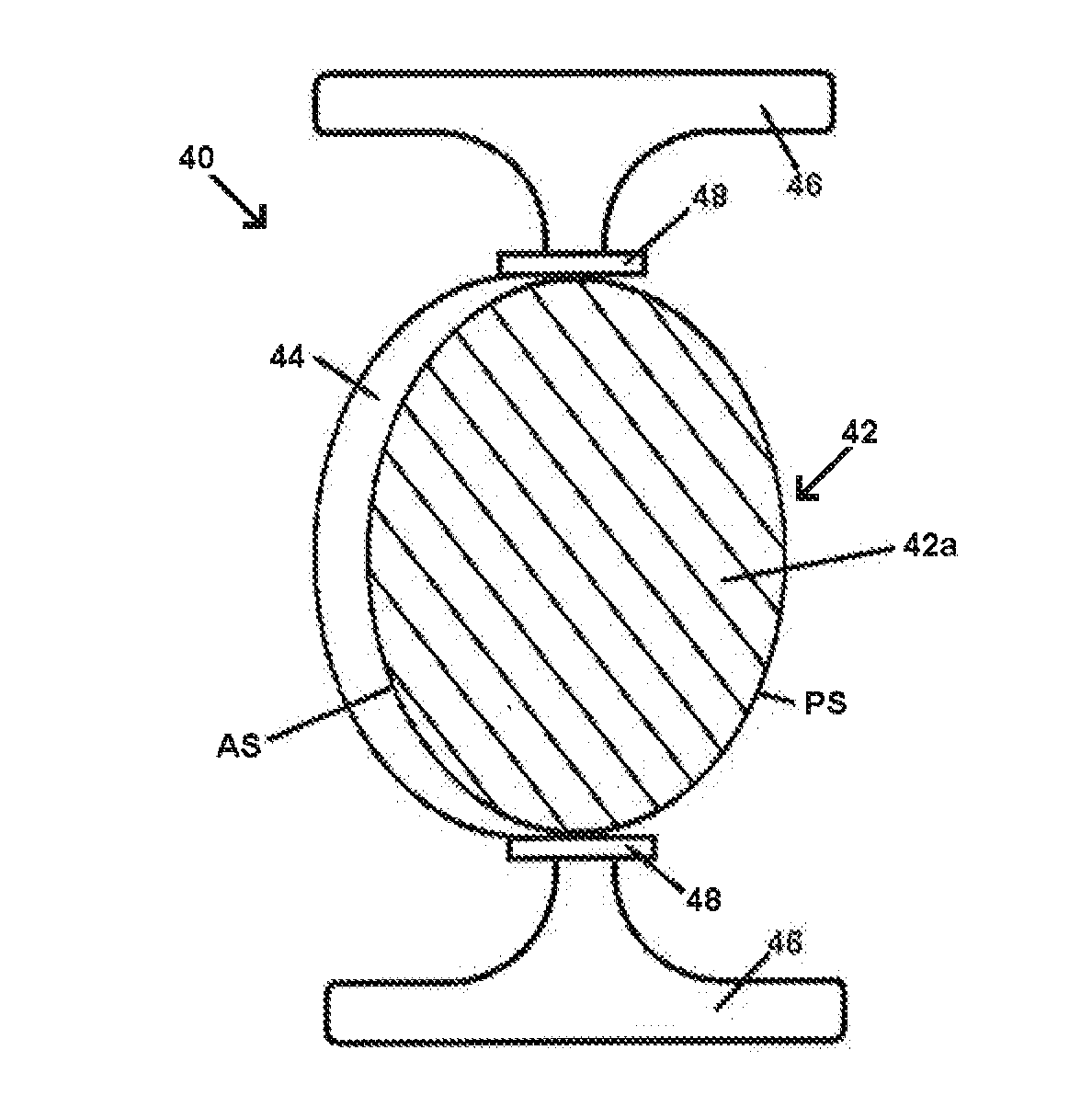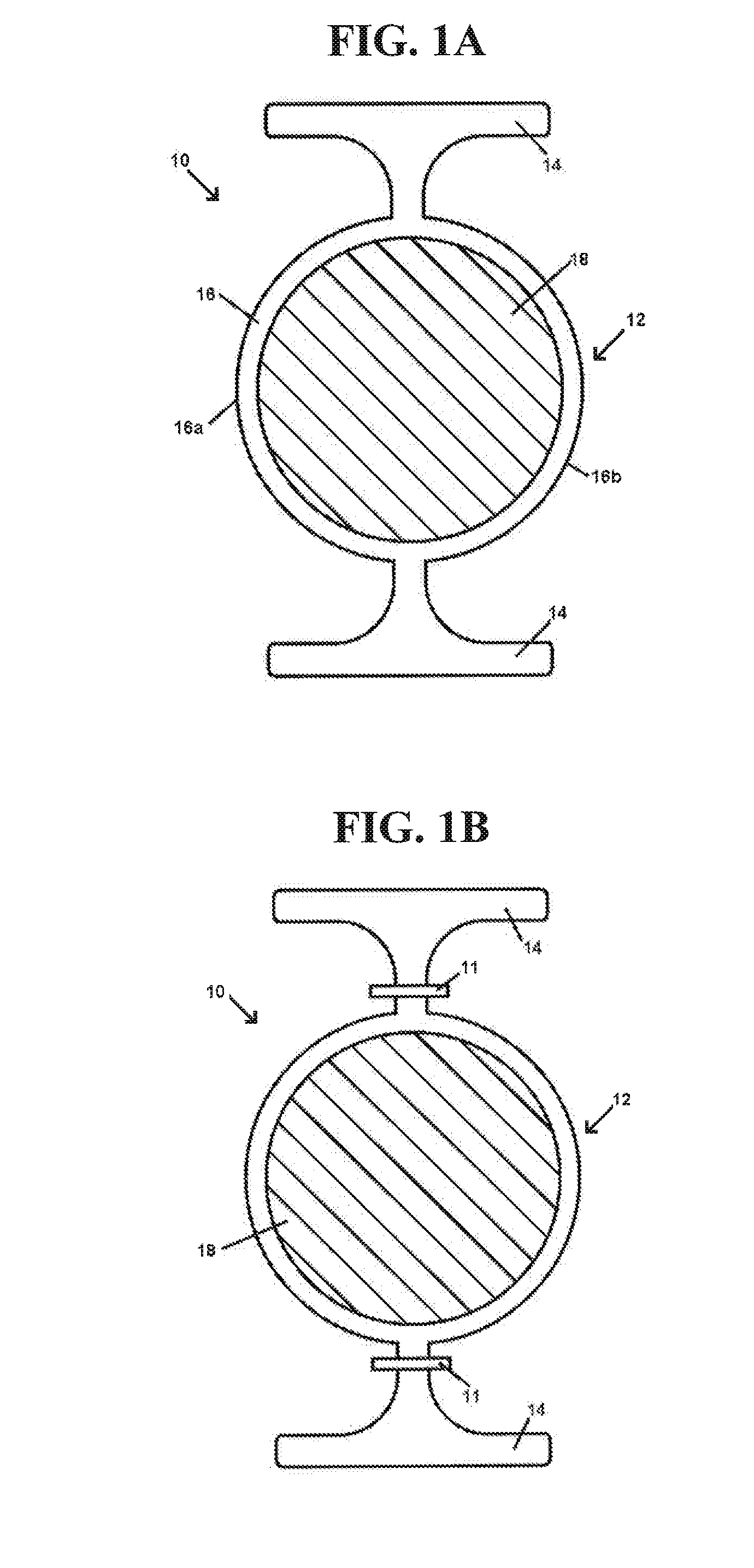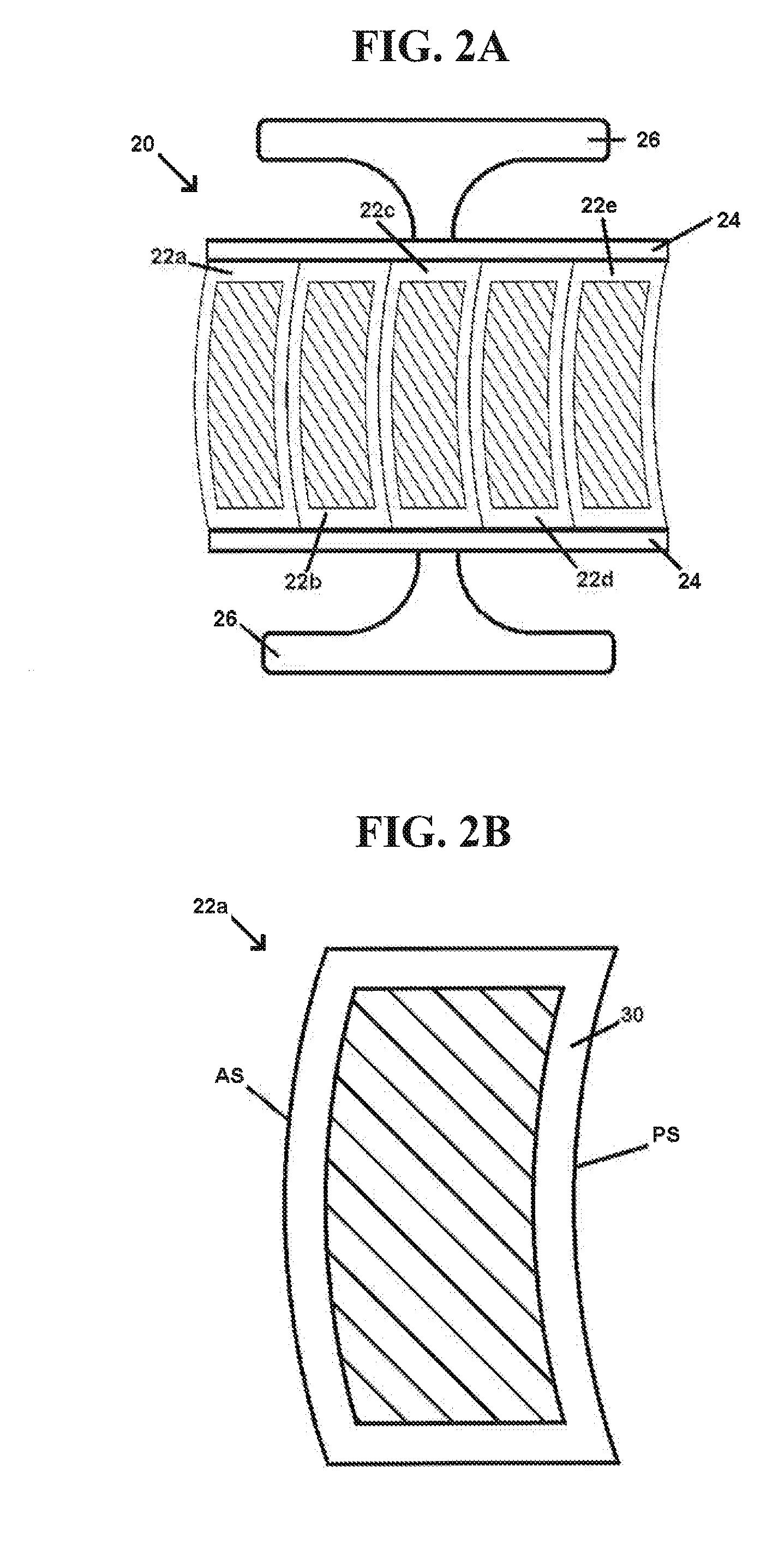Accommodative iol - refractive index change through change in polarizability of a medium
a technology of polarization and iol, applied in the field of accommodative iol, can solve the problems of deteriorating vision, difficult to accommodate, and flattening of natural lenses, and achieve the effect of facilitating accommodation
- Summary
- Abstract
- Description
- Claims
- Application Information
AI Technical Summary
Benefits of technology
Problems solved by technology
Method used
Image
Examples
Embodiment Construction
[0033]The present invention generally provides accommodative lenses, and in particular accommodative intraocular lenses (IOLs), that utilize polarizable and / or electro-active materials to change the index of refraction of one or more optics of the lenses in response to forces exerted on the optics via contraction and relaxation of the eye's ciliary muscle as the subject attempts to view near and far objects. The embodiments discussed below are exemplary, and various changes can be made to these illustrative embodiments without deviating from the scope of the invention. For example, the features of one embodiment can be combined with those of another embodiment.
[0034]FIG. 1A schematically depicts an intraocular lens (IOL) 10 according to one embodiment of the invention that includes an optic 12 for providing an accommodating optical power and a pair of opposing haptics 14 for placement of the lens within the capsular bag of a patient's eye. In this implementation, the haptics 14 are ...
PUM
 Login to View More
Login to View More Abstract
Description
Claims
Application Information
 Login to View More
Login to View More - R&D
- Intellectual Property
- Life Sciences
- Materials
- Tech Scout
- Unparalleled Data Quality
- Higher Quality Content
- 60% Fewer Hallucinations
Browse by: Latest US Patents, China's latest patents, Technical Efficacy Thesaurus, Application Domain, Technology Topic, Popular Technical Reports.
© 2025 PatSnap. All rights reserved.Legal|Privacy policy|Modern Slavery Act Transparency Statement|Sitemap|About US| Contact US: help@patsnap.com



